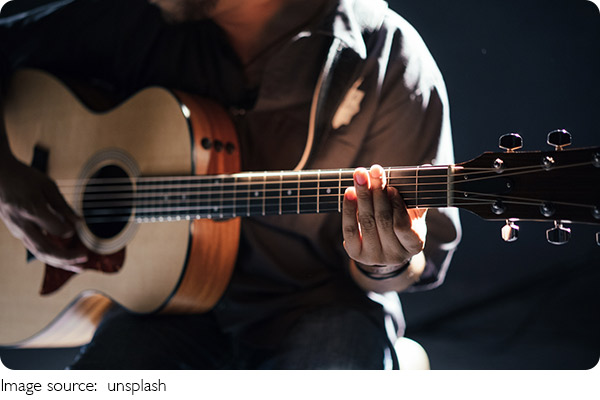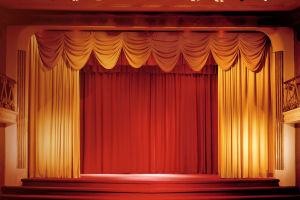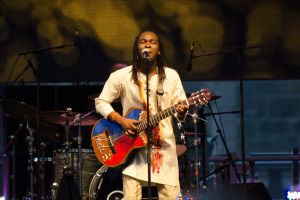Sound Boundaries

Have you ever listened to a piece of sound that made you question—was this music, or something else entirely? In today's creative landscape, the lines between experimental music and sound art are more blurred than ever.
Both challenge traditional ideas of what music can be, but they come from different philosophies and serve distinct purposes.
This article invites you to explore the fascinating boundary between these two innovative art forms and discover what makes each unique.
Defining Experimental Music
Experimental music refers to compositions and performances that push beyond conventional musical rules, embracing new sounds, structures, and technologies. Emerging prominently in the 20th century, artists in this genre often explore unconventional techniques such as extended instrumental methods, electronic manipulation, or non-standard notation.
Key figures like John Cage, who famously used chance operations and silence in music, redefined how we think about sound and listening. Experimental music often retains some musical elements—rhythm, melody, harmony—but twists or abandons them in pursuit of novel auditory experiences.
Understanding Sound Art
Sound art, while related to experimental music, belongs more in the realm of visual and installation art. It focuses on sound as a medium in itself, frequently outside traditional musical contexts. Sound artists use spatial, environmental, or sculptural elements to create immersive auditory experiences that invite listeners to perceive sound in new ways.
Unlike music, which often follows temporal progressions like rhythm or melody, sound art may emphasize texture, space, and ambient noises. It can be site-specific, interactive, or incorporate everyday sounds, blurring the line between art and environment.
The Shared Ground: Innovation and Perception
Both experimental music and sound art challenge listeners to rethink their relationship with sound. They question what qualifies as music and how meaning is derived from sonic experiences. Both forms encourage active listening, where the audience becomes aware of sound's physical properties, contexts, and emotional effects.
Their shared commitment to innovation means artists in both fields often collaborate or borrow techniques. For example, an experimental composer might use environmental recordings—a hallmark of sound art—or a sound artist might apply musical structures to organize sounds.
Differences in Intent and Presentation
One way to distinguish the two lies in their intent and how they present themselves. Experimental music, although unconventional, often aims to be performed in concert settings, with compositions designed to engage an audience over time.
Sound art, by contrast, frequently occupies galleries, public spaces, or outdoor environments where sound becomes part of a larger artistic installation. Its focus is often on creating a sensory environment rather than a performance to be followed from start to finish.
Technology's Role in Blurring Lines
Modern technology has dramatically influenced both fields. The rise of digital tools, recording techniques, and spatial audio has expanded what artists can do with sound. Sound installations may use multichannel speakers to create 3D sonic landscapes, while experimental musicians can manipulate sounds live with laptops and controllers.
This tech evolution has made the boundary between experimental music and sound art even more fluid. A single piece might be presented as a concert work, an installation, or both, depending on context.
Examples That Blur the Boundary
Consider artists like Alvin Lucier, whose piece I Am Sitting in a Room uses recorded speech played back repeatedly to transform into resonant tones. Is it music, sound art, or both? Another example is Janet Cardiff's audio walks, which blend narrative, environment, and sound design, creating experiences that are as much about place as sound.
These works resist easy classification, illustrating the porous nature of the boundary we are exploring.
Why Does This Boundary Matter?
Understanding the difference helps audiences engage more deeply with what they hear and experience. It also guides institutions in how they present and support these works—whether in concert halls, museums, or public spaces.
For artists, knowing the distinctions can shape creative choices, funding opportunities, and collaborative projects.
Engaging the Listener's Role
Ultimately, the listener plays a key role in defining what is music and what is sound art. Both forms ask for openness and active engagement, challenging habitual listening patterns.
Next time you encounter a work that confuses your expectations, ask yourself: what is this sound doing? Is it inviting me to follow a narrative, or is it asking me to inhabit a space? Your answers reveal your own boundaries—and maybe help redraw the map of sound itself.
Conclusion: Embracing Fluid Boundaries
The exploration of experimental music and sound art reveals a creative space where rules are flexible and definitions evolve. Instead of rigid categories, we might better appreciate a spectrum of sound practices that expand how humans create, share, and experience auditory art.

By embracing this fluidity, both artists and audiences can discover new ways to connect with sound—and with each other.
So, the next time you hear an unusual sound or composition, let curiosity lead you. Is it music? Is it art? Maybe it's both—and that's the beauty of the boundary we explore together.
-
 Music as MedicineIs Music Therapy an Art or a Medical Practice? Exploring Its Role in Healing Mind and Body!
Music as MedicineIs Music Therapy an Art or a Medical Practice? Exploring Its Role in Healing Mind and Body! -
 Drama Meets MelodyHow Musical Theatre Blends Dramatic Storytelling with Melodic Brilliance to Create Unforgettable Stage Experiences!
Drama Meets MelodyHow Musical Theatre Blends Dramatic Storytelling with Melodic Brilliance to Create Unforgettable Stage Experiences! -
 Global Sounds UniteHow World Music Is Driving Cultural Fusion and Inspiring a New Era of Cross-Border Creativity!
Global Sounds UniteHow World Music Is Driving Cultural Fusion and Inspiring a New Era of Cross-Border Creativity!